Kevin O'Neill Talks League of Extraordinary Gentlemen, Volume 3: Century
May 17, 2014
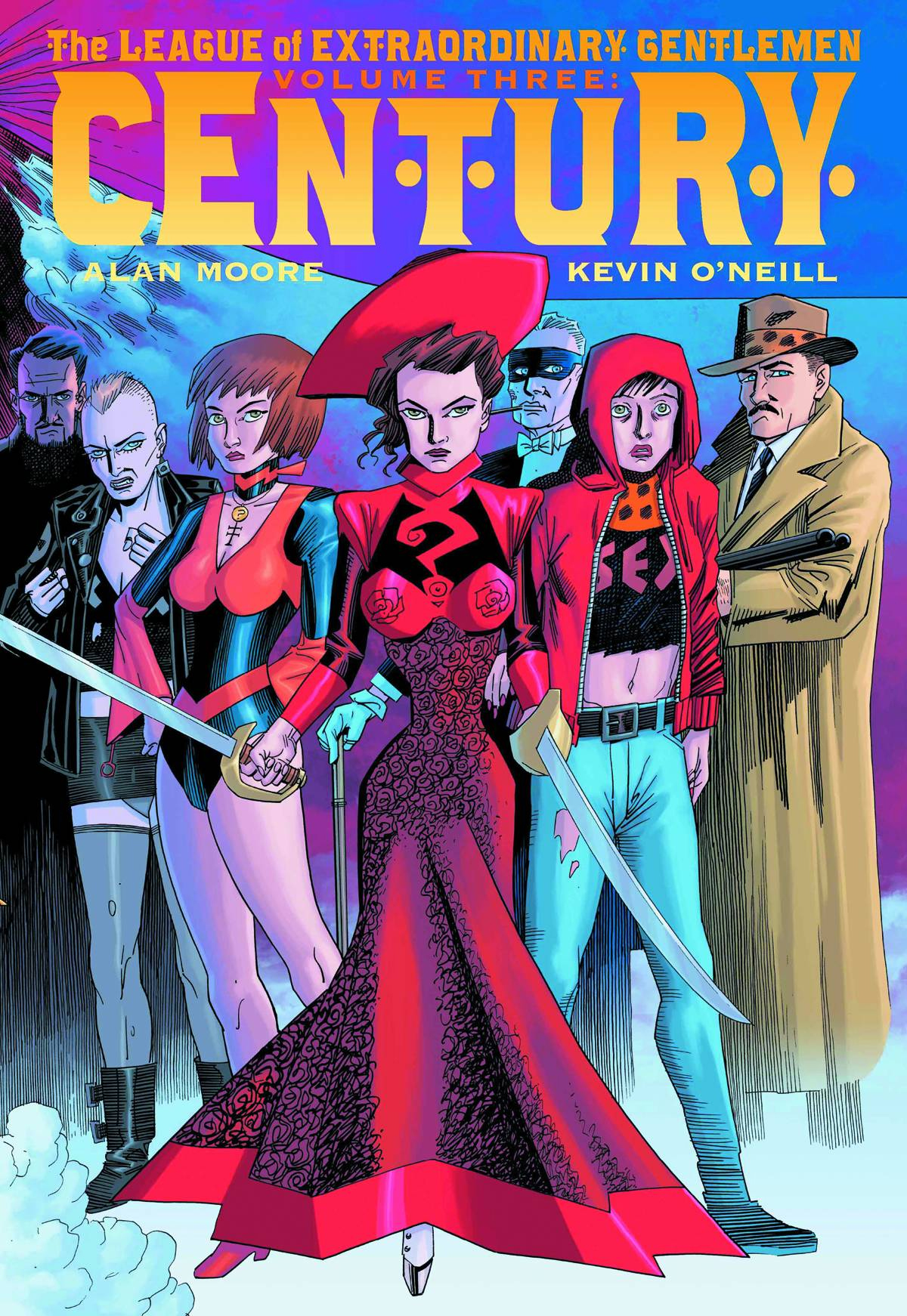 |
by Eric Shepperd
The nineteenth century, expiring with a flourish of Moriarty and Martians, has left the division of Military Intelligence commanded by Mina Murray in a state of disrepair. While she and her lover Allan Quatermain have achieved a measure of eternal youth, recruiting new talents such as the trans-gendered immortal Orlando, the ghost-finder Thomas Carnacki and the gentleman thief A.J. Raffles to replace their deceased or missing colleagues.
Now it is the early years of a new and unfamiliar century, and forces are emerging that appear to promise ruin for the Murray group, the nation and indeed the world, even were it to take a hundred years for this apocalyptic threat to come to its disastrous fruition. From the occult parlours and crime-haunted wharfs of 1910, through the criminal, mystical and psychedelic underworlds of 1969 to the financially and culturally desolated streets of 2009, the disintegrating remnants of Miss Murray and her League must combat not only the hidden hand of their undying adversary, but also the ethical and psychological collapse accompanying this new era. And a lot of things can happen in a Century.
Kevin O'Neill, artist, talked with PREVIEWSworld about The League of Extraordinary Gentlemen, Volume 3: Century (MAY141615).
********
PREVIEWSworld: In Century, the story is told through three different years: 1910, 1969, and 2009. What about these three years in particular did you find the most compelling and inviting to a story?
Kevin O'Neill: 1910 while visually not too different form the earlier Victorian volumes continues the British dread of invasion—long feared in fiction and given bloody reality in 1914. The London Dock Side setting gave us ample opportunity to feature an almost Dickensian class of bit players while providing a spectacular action background.
I grew up near Woolwich in South London and its docks and waterfront had the very atmosphere of a Saxrohmer novel.
1969 provided a tipping point in British culture marking the imperfect end of the sixties with drugs and an increased interest in the occult mixed with an increasing schitzo creative landscape.
2009 is a rare case of me drawing a present-day story. Again drugs and a rising tide of interest in pagan beliefs and the occult—softened and made compliant in popular fiction and cinema provided a large fictional target to aim for.
My approach has been to stay true to the existing screenplays while tailoring the stories to better fit the comics medium. It’s a challenging game of artful reduction, but we’re all really happy with the results.
PREVIEWSworld: Music is a large part of the series, especially in the 1910 volume. What made the music sung by certain characters so crucial to the story? What kind of effect do you think it has on the books?
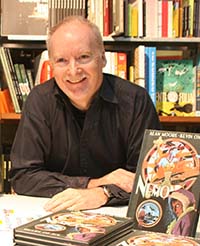 |
Kevin O'Neill: Singing songs around an upright piano were part of my memory of growing up in London. Everyone enjoyed a sing song. I was in the school choir and knowing the words of pop songs was important to us. People breaking into song was not unusual! Post-karaoke, maybe singing in public is less common, but Alan and I remembered the emotional impact in had. In Century it has the effect of a Greek chorus running a critical thread across the decades.
PREVIEWSworld: There is a lot of humor in the books, even in the midst of some very dark situations. Do you have a part of the books that really stands out to you and makes you laugh?
Kevin O'Neill: What still makes me laugh is the oddly moving black humor in the Anti-Christ’s petulant attitude. It is both funny and pitiful.
PREVIEWSworld: Cultural decline is focused on heavily as we travel to 2009, especially with certain characters dealing with the harsh reality of the recession. How important was it to show this change from the point of view of these characters who were living through so many decades?
Kevin O'Neill: We played the longevity of certain characters as a curse. An eternal drug addict is a terrible fate. This is balanced by Orlando who has approached eternal life as an opportunity for endless anecdotes—all true but sounding like the raving of a barroom bore. Mina is struggling to keep but determined to do so. I saw first-hand an older generation confused by the speed of change and frustration with a youth movement with the voice and income to assert themselves.
PREVIEWSworld: How did you go about and like creating a different artistic feel for each book, seeing as the decades that they are in are so vastly different?
Kevin O'Neill: I was born in 1953 so I have experiences many of the cultural and visual shifts we have explored in Century. As a youngster I became steeped in Victorian and Edwardian iconography. So many people and artifacts of the period were still around—old books and periodicals, silent movies, furniture, gramophone records and buildings, and the memories of relatives. I also love working with steel nib pens and find they are most adept at invoking a sense of the period.
PREVIEWSworld: For fans of the League and new readers alike, what would you say about Century to get them to open up to the first page of the new collected volume?
Kevin O'Neill: If the opening endpapers don’t grab you then seeing Alan Moore at the top of his game will do the trick.
| Check out some preview pages below! |
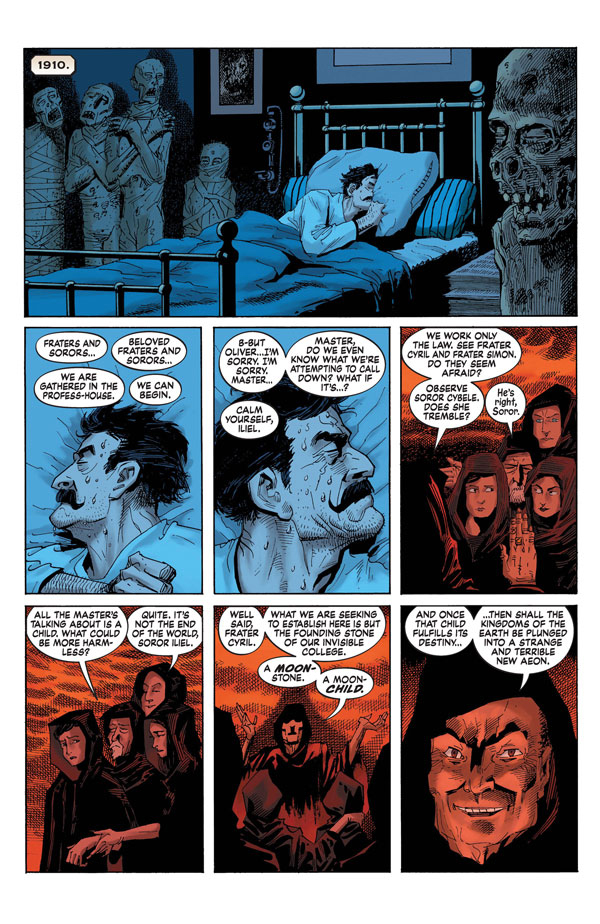 |
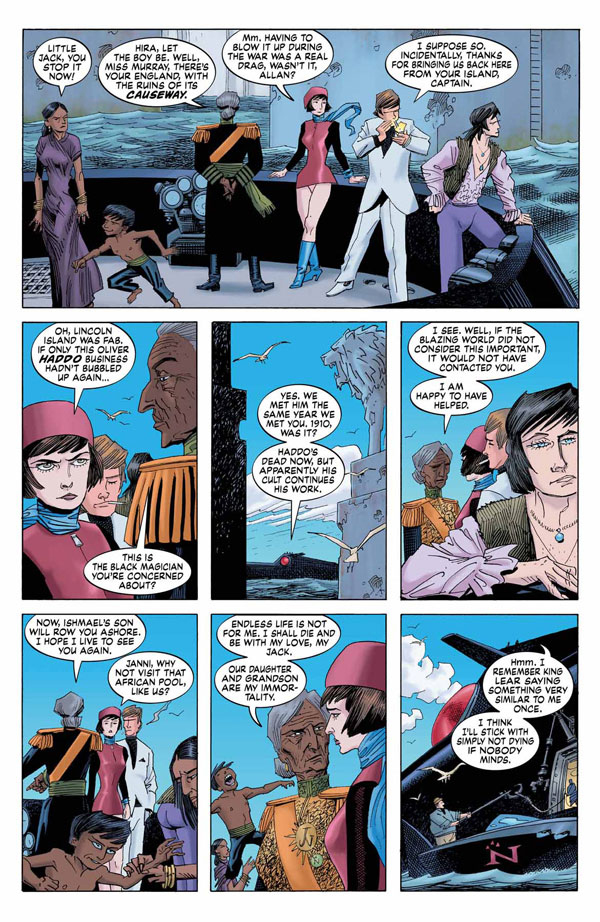 |
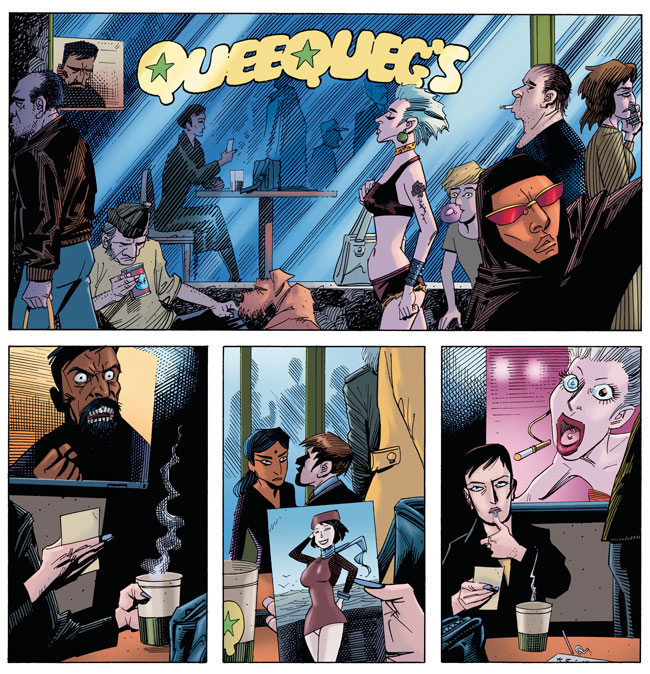 |




